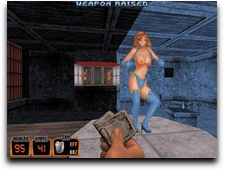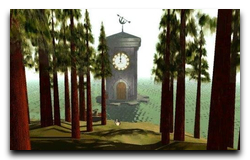 Duke Nukem 3D has now been certified by Microsoft and is ready for the big time, let’s rock. It seems like “forever” since we’ve seen a Duke Nukem game, even if this is simply a flashback to 1996. There were plenty of gamers that have an Xbox 360 now that didn’t get to play Duke Nukem 3D back then
Duke Nukem 3D has now been certified by Microsoft and is ready for the big time, let’s rock. It seems like “forever” since we’ve seen a Duke Nukem game, even if this is simply a flashback to 1996. There were plenty of gamers that have an Xbox 360 now that didn’t get to play Duke Nukem 3D back then
This is a great time for younger gamers to experience an old school FPS in the days where we had to network our DOS systems together and play over IPX, before the Internet would bloom to where it is today. This version of Duke 3D has Xbox 360 achievements, so you can go back and re-live and re-achieve like never before.
“Murderous aliens have landed in futuristic Los Angeles, and humans suddenly find themselves atop the endangered species list. The odds are a million-to-one, just the way Duke likes it!”
It’s important to look back at some of our old games and replay them to see just how much we’ve advanced. It may not, however, be enough to make an old school gamer re-buy the game again. I find it odd that someone took the time to put energy into porting old Duke 3D and have yet to release Duke Nukem Forever, that was promoted back in 1997 is that next great Duke game. Where is it? Instead, we get a rehash of the last title. Interesting decision.
(Thanks, Kotaku)

 Myst was published by Brøderbund Software, developed by Cyan Worlds and created by two brothers that did the design and directed the game (it was, much like a movie).
Myst was published by Brøderbund Software, developed by Cyan Worlds and created by two brothers that did the design and directed the game (it was, much like a movie).
There’s been plenty of console Duke Nukems since Duke Nukem 3D.